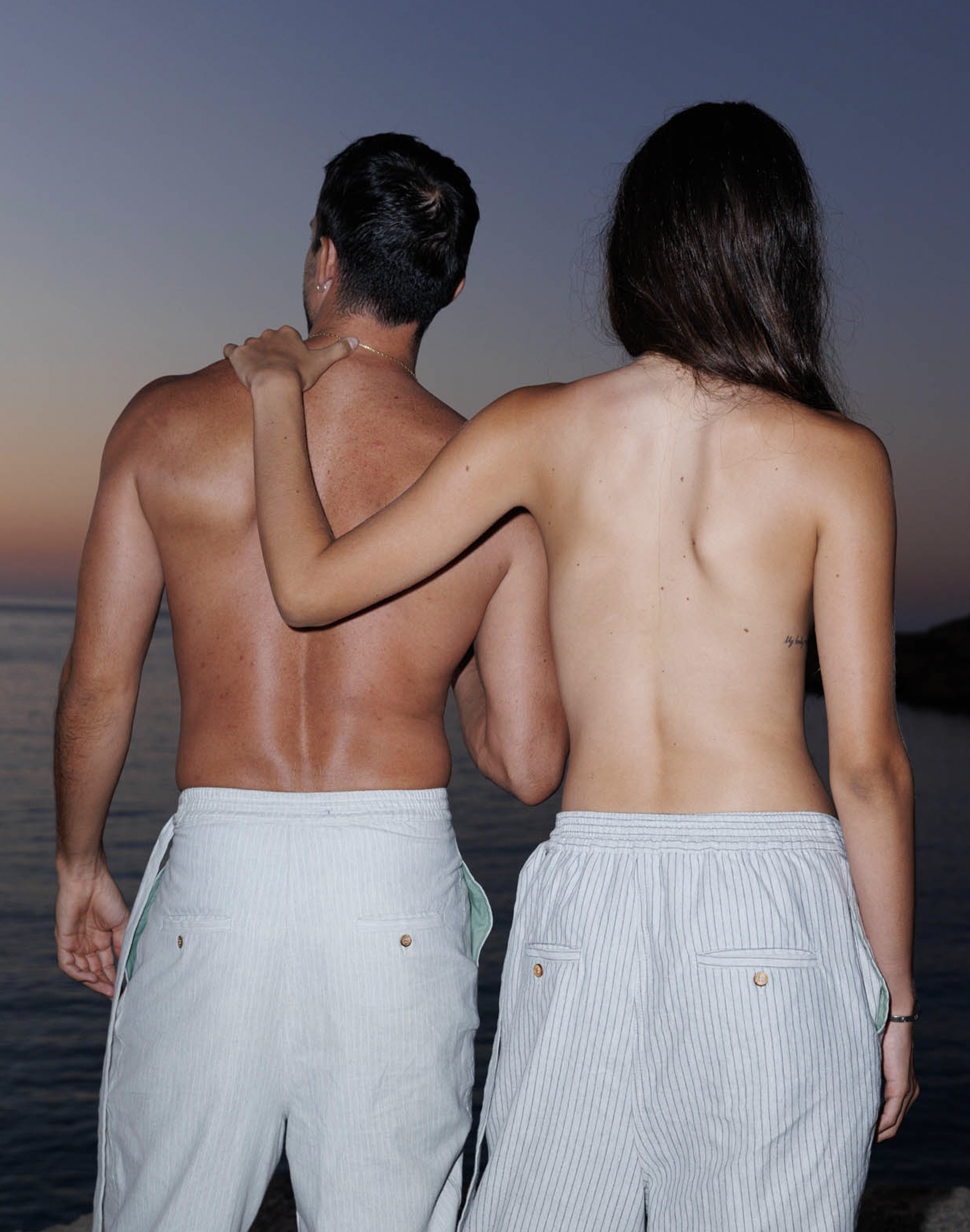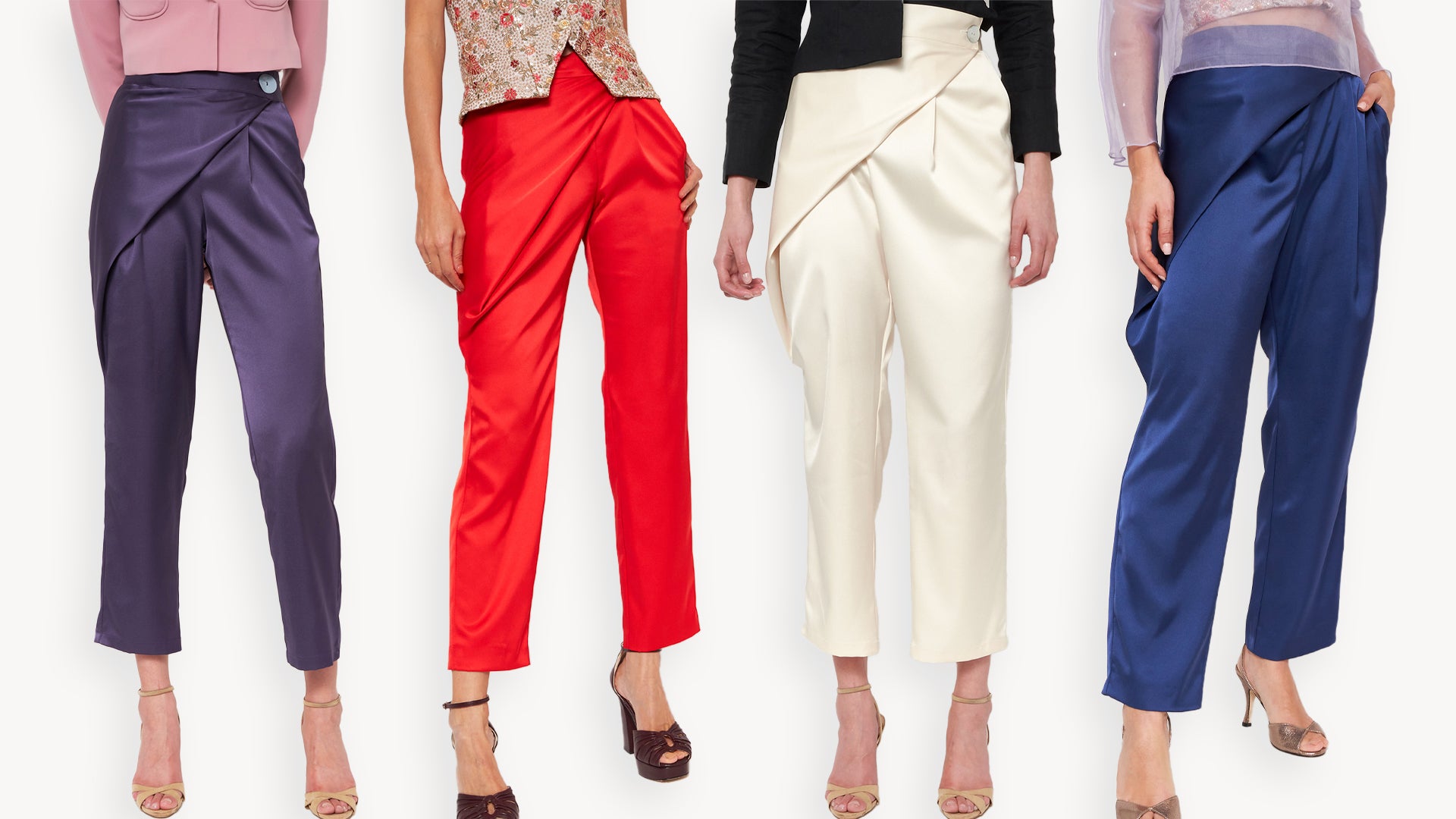
Written by: Diletta Pellegrino
In today's society, fashion should not only be about creating clothing, but also about creating a community where everyone feels represented and valued. Unfortunately, the fashion industry has been historically exclusive and limited in its representation of diverse identities. However, at Mantalon, we want to change the game by prioritizing inclusivity, diversity, and sustainability in our designs and practices.
Mantalon's Fight for Size Inclusivity in Fashion
At Mantalon, we promote inclusivity in fashion by creating size-inclusive clothing to ensure that our garments fit and flatter all body types. We recognize that not everyone fits into the narrow range of sizes that most fashion brands offer, and we want to promote body positivity and self-confidence through our clothing. Our trousers are designed to fit all body types and genders, so everyone can enjoy the comfort and style that Mantalon has to offer.
Furthermore, Mantalon prioritizes gender-neutral clothing that is not limited by traditional gender norms. We believe that fashion should be inclusive and that everyone should have the freedom to express themselves in the way they feel most comfortable. By creating gender-neutral clothing, we aim to promote a more inclusive and accepting society.
The fashion industry is making strides towards being more inclusive and diverse. The lack of representation and inclusion has been a prevalent issue in the industry, but brands like Mantalon are helping to change that. The industry has often been dominated by major fashion houses, but the tide is turning, and more diverse voices are being heard.
The Importance of Size Inclusivity in Fashion
The fashion industry has long struggled with size inclusivity, often offering limited sizing ranges and catering only to a narrow range of body shapes and sizes. This can lead to feelings of exclusion, body shaming, and low self-esteem among those who don't fit into the industry's narrow beauty standards. As a result, many people struggle to find clothing that fits them well and makes them feel confident.
For many years, the fashion industry has been criticized for its lack of size inclusivity, with many brands offering limited sizing ranges and catering only to a narrow range of body shapes and sizes. This has led to feelings of exclusion and body shaming among those who don't fit into the industry's narrow beauty standards. However, the tides are slowly turning, and there has been a recent push for more size inclusivity in the fashion world.
The Evolution of Size Inclusivity in Fashion
Traditionally, fashion week has been a time for designers to showcase their latest collections on the runway, but it has also been a time when models are often criticized for being too thin or not fitting into the industry's narrow beauty standards. However, in recent years, there has been a growing movement towards size inclusivity, with more plus-size models walking the runway and designers offering more inclusive sizing options.
Many brands have also recognized the importance of size inclusivity and have started offering extended sizes in their clothing lines. This is a crucial step towards making fashion more inclusive, as it allows people of all shapes and sizes to find clothing that fits them well and makes them feel confident. It's important to note that size inclusivity should not only be limited to plus-sized clothing, but should also include clothing for those who wear smaller sizes, such as size 0 and 2.
There are now many size-inclusive brands that cater to a wide variety of body shapes and sizes, regardless of size. These brands recognize that every body is different and that people should be able to find clothing that fits them well and makes them feel good about themselves. Luxury brands have also started expanding their sizing ranges to be more inclusive, recognizing that size inclusivity is not only the right thing to do, but also makes good business sense.
The apparel industry has also started advocating for size inclusion, recognizing that a lack of size inclusivity can have negative effects on both individuals and the industry as a whole. Body diversity is an important issue that needs to be addressed in order to combat body shaming and promote self-confidence. Fashion magazines have also started featuring models of different sizes and shapes, promoting body positivity and inclusivity in the industry.
It's important to note that offering more sizes and being more size-inclusive does come with its challenges, such as grading and additional fees for designs larger than a specific size. However, it's crucial that the industry continues to work towards more size inclusivity, as every body deserves to feel confident and beautiful in the clothes they wear.
Over the years, the fashion industry has slowly started to embrace size inclusivity, but progress has been slow. Many luxury brands and high-end designers have been criticized for excluding larger sizes from their collections, perpetuating the idea that fashion is only for those who fit into a specific size range. However, in recent years, there has been a growing demand for size-inclusive fashion, and many brands are starting to take notice.
Mantalon is one of these brands, recognizing that offering a range of sizes is not only the right thing to do, but it also makes good business sense. By catering to a wider range of body types, we are opening up our customer base and making their clothing more accessible to a larger audience.
Why Size Inclusivity Matters
Size inclusivity in fashion matters because it promotes body positivity and self-confidence, and helps to break down harmful beauty standards that can be damaging to people's mental health. By offering a range of sizes, fashion brands like Mantalon are helping to create a more inclusive and accepting society, where people of all shapes and sizes can feel comfortable and confident in their own skin.
Additionally, offering size-inclusive clothing is not only good for consumers, but it also benefits the fashion industry as a whole. By embracing diversity and inclusivity, brands are able to reach a wider audience and stay relevant in a rapidly changing market.
Ultimately, size inclusivity is important as it affects many people, and Mantalon is one fashion brand that is making a difference. By prioritizing size inclusivity and body positivity in their designs and practices, they are helping to create a more inclusive and accepting society, where people of all shapes and sizes can feel comfortable and confident in their own skin.



